After two virtual issues, SIGGRAPH went back to reality in Vancouver this year with a hybrid edition. The Vancouver event reconnected to the pre-pandemic traditional show formats. The online edition focused on the tracks with proven broadcast eligibility throughout the pandemic period. Especially, the immersive sections could refill the exposition and convention spaces with art installations, emerging tech demos and VR theater shows, while Technical Papers and Birds of a Feather discussion groups were featured in the virtual streams as well. An everyday live stream of keynotes, presentations and panels from the auditorium linked the real event to the virtual platform, and roving reporters guided the online audience through the convention halls.
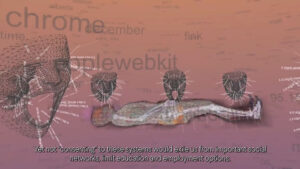

Being a long-established community event, face to face meetings and local gatherings are the most essential part of the conference week, especially after the pandemic interruption. A vivid chat room on Discord tried to replicate this specific asset for the online participants. Apart from catching up with showcasing works and presentations from previous online editions in a real space framework, the main topics of the conference continued the trends of the virtual editions – namely 3D working pipelines and virtual cooperation, animation enhancement with machine learning and artificial intelligence and interface haptics for immersive environments.
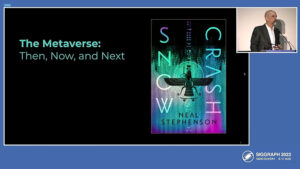
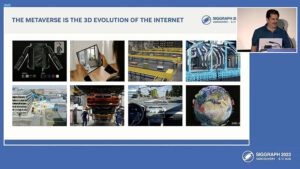
In contrast to general media events, game shows and funding panels, an overarching media trend like the ongoing Metaverse trope was channeled into more concrete debates on digital format standardization, interoperability strategies and cloud computing necessities. Most strategical perspectives in this area built up on previous experiences for virtual cooperation in the film animation industry and in the establishment of the original internet structure. Given the half a century spanning history of the SIGGRAPH conference, distributed work on digital imagery has quite a tradition among the researchers and globally organized animation studios.
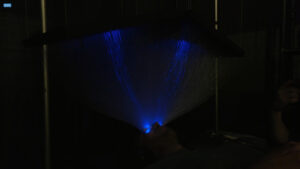
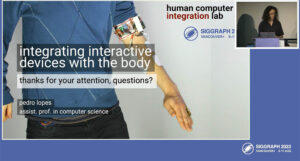
Some social and political aspects of the digitization were reflected as well. At least, the conference started with a prominent panel discussion on privacy issues in virtual realities and closed with a personal reflection of Meta‘s innovation management. But the conceptual vagueness on these topics stood in sharp contrast to the general enthusiasm for technological advancement and emotional design strategies. This resulted in an underlying discomfort being addressed as well by the Q&A sessions on site as in the virtual discussion groups, where nagging questions and demands for a civilized orientation framework came up repeatedly.


The growing influence of automatization in animation tools and game engines, with ever more integrated machine learning in the production process, may shift the focus of the conference from traditional in-camera conception to more immersive real-time performance. The popular Electronic Theater features SIGGRAPH’s traditional success formula. But the Real-Time Live! Showcase with a focus on performant immediacy catches up in attraction value and outperforms in creative production potentials.

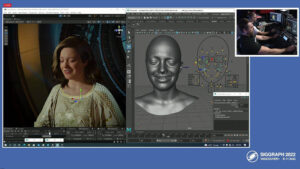
This year’s Vancouver edition of SIGGRAPH was primarily about reconnection in person. The hybrid edition achieved a tripled expansion of participants, although the virtual attending suffered some restrictions. No immersive content was being made available for remote attendants. The Metaverse according to SIGGRAPH is in the pipeline, not yet in the sight line.

